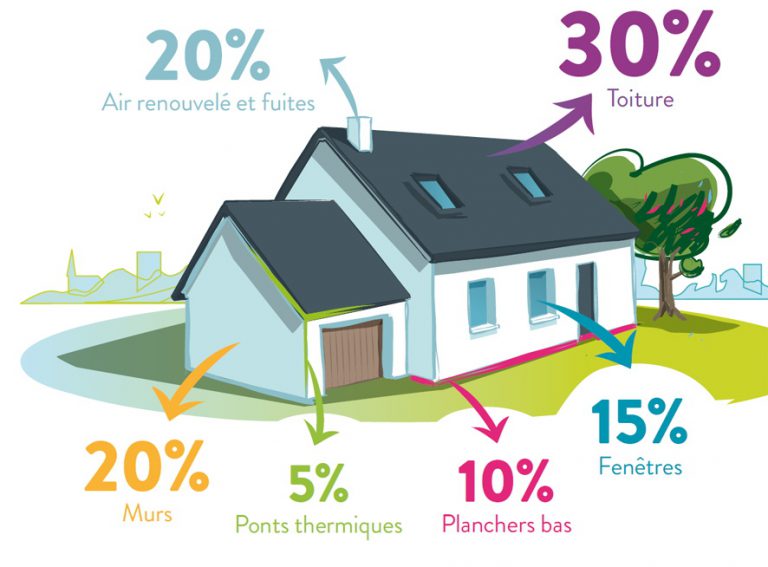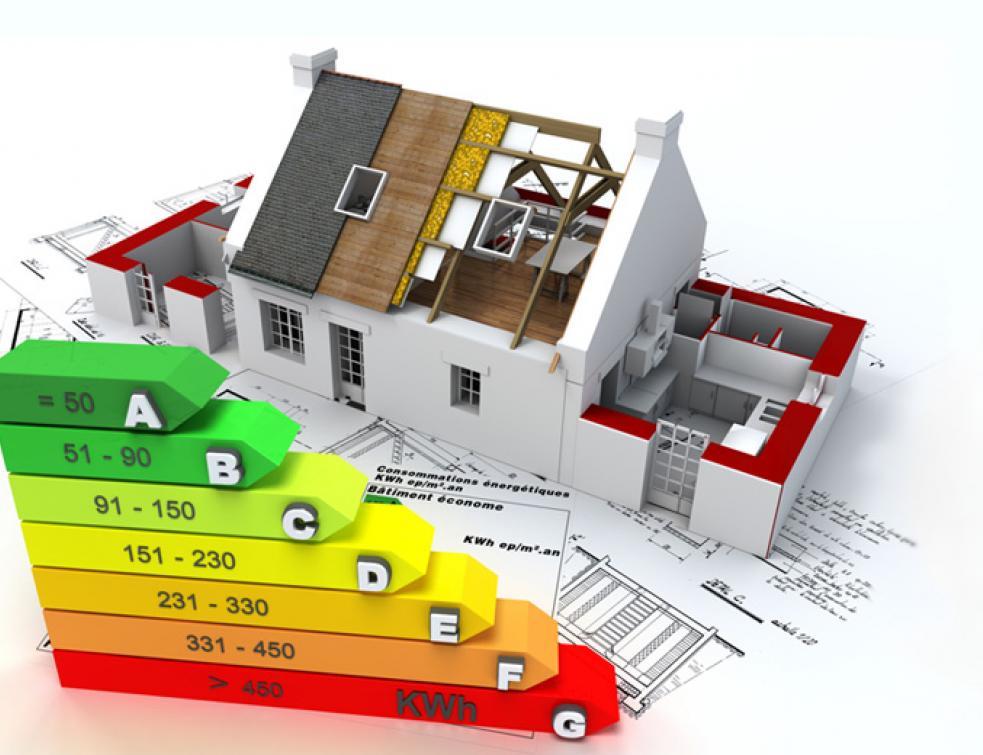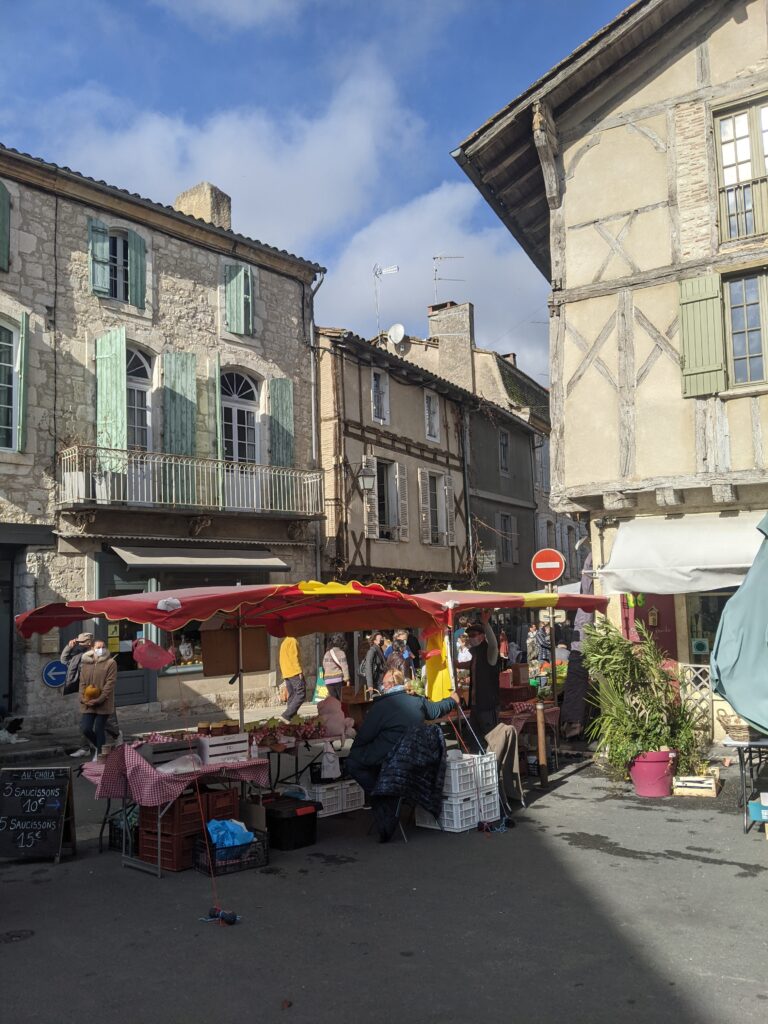Ode to renovation
In this article, which the tonality is an ode to renovation, we will try to explain the benefits of rehabilitation and transformation of the built heritage.
It should be remembered that the construction and real estate sector is responsible for 40% of greenhouse gas emissions, 36% of final energy consumption, 60% of waste, 10% of global electricity consumption for air conditioning alone, not to mention the thousands of hectares of agricultural land artificially damaged each year…
However, the adaptation of existing buildings is a very powerful tool for reducing the impact of this sector due to a much more limited use of construction materials, the production of which is itself energy-intensive and CO2-emitting, and the replacement of energy appliances dependent on fossil fuels with equipment that uses renewable energy, not to mention the reduction of urban sprawl.
Renovating to reduce CO2 emissions
Based on renewable energy or with good efficiency, here are some systems that should be favoured when undertaking thermal renovation work:
As a renewable energy, wood is an efficient and economical source of heating. According to Ademe, it is the cheapest heating solution. Wood is very cheap but it can take up space. It must be possible to store it.
The combined solar system is a heating system that uses solar thermal energy. The sun heats thermal collectors to raise the temperature of the water in the heating circuit.
The thermodynamic water heater uses the calories present in the outside air to heat the water. The thermodynamic water heater allows you to divide your hot water expenses by 2 or 3.
The individual solar water heater is equipped with thermal solar panels and heats the water in the tank using solar energy. It can provide 60% to 80% of a household’s hot water needs.

Renovating to reduce energy bills
When it comes to thermal renovation, insulating lost attic space or the roof is often the priority. According to Ademe, in a poorly insulated home, 25 to 30% of energy loss occurs through the roof.
Insulating the walls is also an important task. Indeed, the walls can account for up to 25% of heat loss. There are two ways to reduce this waste of energy:
- Insulating the walls from the inside. In most cases, interior wall insulation involves placing insulation directly against the wall. It can also be done by blowing in. Insulation is blown in between the wall and a counter wall.
- Insulation of walls from the outside. More expensive, insulation from the outside is considered more effective. It is usually carried out during a facade renovation. It consists of installing insulation on the outside walls. The problem is that in heritage towns you will not be allowed to do this type of insulation to preserve the architectural character of the buildings.
Insulating the glass walls is also very important. According to Ademe, windows account for 10 to 15% of heat loss.
Low floors account for 7 to 10% of energy wastage in a house. In terms of thermal comfort and energy savings, insulating low floors makes sense.

Renovating for comfort
The notion of thermal comfort refers to temperature and air quality conditions. In everyday language, thermal comfort is more related to achieving a comfortable temperature in a house. In general, individuals will need 19°C in the living room and 17°C in the bedrooms. Thermal comfort is also related to the phenomenon of dry air or humidity.
It is also a question of comfort in use, which consists of improving daily life by making adjustments to the space or refreshing the materials. Enlarging the kitchen, installing a bookcase, replacing the carpet with parquet, replacing the bathtub with a walk-in shower are all small interventions that have a big influence on the occupants’ feelings and well-being.

Renovating to enhance the value of your property
Since 2011, the DPE (energy performance diagnosis) must be displayed on property rental/sale advertisements. There are two categories of EPD label to be displayed on these ads, corresponding to two assessments: “energy” and “climate”. The climate measure concerns the amount of energy consumed by the property, while the energy measure measures the amount of greenhouse gas emissions. On both types of label, the efficiency of the property is measured on a scale from A to G, with G being an indicator of poor performance. A study published in 2011 estimates that 80% of French homes are not efficient enough according to the criteria of this nomenclature.
With the reform of the new DPE, many restrictive measures against landlords have been communicated in the media: rent freezes, mandatory energy audits and rental bans.
This is the most energy-intensive housing in the French rental housing stock, which emits more than 450 kWh/m2/year, i.e. 4% of thermal flats. Of the 4.8 million flats in France in 2022, 1.7 million are rated G on the energy performance diagnosis scale. This represents nearly 1.2 million tenants.
This is a major challenge for landlords. Energy efficiency is now a criterion associated with the evaluation of the decency of a dwelling with a minimum surface area of 9 m2.

Rehabilitate/transform to make cities and regions more attractive
Action Cœur de Ville, Small Towns of Tomorrow, territorial revitalisation operations, brownfields funds, are all ways of promoting the attractiveness of small and medium-sized towns, formerly industrial districts, and peri-urban or rural areas in decline. These financial aid and project engineering programmes are deployed at different levels, from the building to the neighbourhood, and tend to massify and amplify the renovation and rehabilitation of buildings and, by extension, of cities.
Combining individual aid and aid intended for local authorities seems necessary to create an ecosystem of renovation and rehabilitation actors supported by cities and activated by the demand of property owners and lessors.

To put it in a nutshell
Renovation is therefore less raw material, more grey matter in the sense that many diagnoses and studies are necessary. Project times can be longer, while work schedules can be reduced because connections to networks, earthworks and structural work are not necessarily necessary.
The main obstacle to renovation is certainly the cost of the work, which is ultimately similar to the cost of new construction when the renovation work concerns both the shell and the finishing work, but demolition-reconstruction, out of environmental awareness, should only be considered in the event of irremediable structural and health risks.
Renovation is a demanding intellectual process that requires a great deal of technical skill and agility. It is necessary to know how to analyse the main pathologies of the building and to prioritise the work in order to respect the constraints of a budget set by the project owner. Support from professionals such as architects, energy specialists, engineers and construction companies is also essential. Don’t forget that Domolis offers a global service covering an operation from A to Z with tailor-made solutions adapted to the context of the mission entrusted.
To go further :
Profeel, Rénover et densifier les quartiers d’habitat pavillonnaire
https://programmeprofeel.fr/ressources/renover-et-densifier-les-quartiers-dhabitat-pavillonnaire/
The Shift Project, Habiter dans une société bas carbone
Ademe, la Ville low tech
https://librairie.ademe.fr/urbanisme-et-batiment/5219-la-ville-low-tech.html
Sources :
https://conformenergie.fr/nos-services/renovation-energetique/
https://www.quelleenergie.fr/magazine/importance-dpe-estimation-bien-immobilier
https://chauffo.net/gagner-en-confort-thermique/
https://www.dimo-diagnostic.net/actualite-diagnostic-immobilier/interdiction-location-dpe-g

